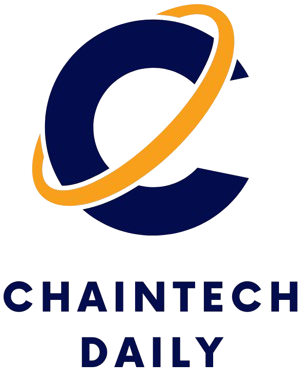Disclosure: The views and opinions expressed here belong solely to the author and do not represent the views and opinions of crypto.news’ editorial.
Stablecoins are the backbone of the digital economy. They enable payments and trading, providing stability and efficiency on the blockchain. With institutional adoption on the rise and regulations improving following the passage of the GENIUS Act, stablecoin markets appear stronger than ever.
Summary
- Stablecoins face a looming quantum threat — current cryptography (RSA, elliptic curves) could be broken once quantum computers hit “Q-Day,” exposing billions in assets to instant theft.
- The risk is urgent and underestimated — experts warn quantum machines may arrive within a decade, while finance is already preparing with quantum risk tools; yet crypto lags dangerously behind.
- Blockchain immutability is a double-edged sword — stablecoins can’t easily swap out old cryptography, leaving dormant wallets and static addresses highly vulnerable.
- The solution: quantum-safe cryptography + crypto-agility — lattice- or hash-based signatures, paired with upgradable infrastructure, can future-proof stablecoins against attacks.
- Regulation is catching up — U.S. laws like the GENIUS Act, along with global standards from NIST, will soon require quantum resilience, making preparedness a competitive and compliance necessity.
However, the financial world faces a quantum disaster. While billions flow through stablecoins, few in the crypto sector discuss the quantum crisis that could wipe out stability overnight. If we don’t act now to create quantum-proof stablecoins, the entire digital asset economy could collapse with one breakthrough. Beneath the success of digital assets lies a threat: quantum computing.
While stablecoin issuers celebrate compliance and innovation, many remain vulnerable to the growing risk of quantum attacks. The cryptography that stablecoins rely on, such as elliptic curves and RSA signatures, could be susceptible to attacks from quantum machines. National security agencies and cybersecurity experts have warned about this, urging critical infrastructure to start transitioning to post-quantum cryptography before 2030. Once quantum computers reach “Q-Day”, the day they can break current public-key cryptosystems, any stablecoin using old cryptography would be at risk of immediate attack. It’s estimated that unchecked quantum computing could lead to up to $3.3 trillion in indirect financial losses due to vulnerabilities in infrastructure.
Given the global scale of stablecoins, with billions in daily volume, they represent an attractive target. However, there is a solution to “future-proof” stablecoins today.
Future-proofing stablecoins
Quantum preparedness is now a hot topic in global finance. However, the crypto sector is lagging in this discussion. By 2026, 65% of banks and 70% of hedge funds are expected to utilize quantum risk modeling tools. Almost half of global CFOs see quantum technology as vital for their long-term strategies. These trends show an urgent need for quantum-safe solutions. They also highlight the importance of strengthening the core cryptography in financial systems.
The quantum threat is closer than many think. Experts predict that powerful quantum computers, capable of breaking current cryptographic standards, could emerge within a decade or even sooner. Recent market research indicates that the global quantum computing market is expected to grow from $1.68 billion in 2025 to nearly $30 billion by 2034. This growth reflects rapid technical advancements and increasing investments from both the government and private sectors.
However, stablecoins face unique risks. The immutability of blockchain means that tokens can’t be easily altered with new cryptography after launch. This immutability is a double-edged sword. It ensures that history remains unchanged, but also means cryptographic flaws cannot be easily repaired. As quantum technology advances, dormant or legacy wallets and static addresses may become vulnerable. Without upgrades, billions in value may be susceptible to theft.
Why quantum could break stablecoins…sooner than you think
The time to future-proof stablecoins is now. Strong issuers must quickly adopt quantum-resistant cryptography. They should use advanced signature schemes, such as lattice-based or hash-based cryptography, to protect against attacks. These types of cryptography are considered “quantum-safe.” Unlike older systems such as RSA or elliptic curve cryptography, no known or expected quantum algorithm can efficiently break them.
This makes them the best choice for securing digital money in a quantum future. Quantum computers can solve the math problems behind elliptic curves and RSA cryptography, which stablecoins currently use. This means digital signatures could be broken almost instantly when powerful quantum machines become available. Since public keys are always exposed on blockchains, a quantum-equipped attacker could swiftly compute private keys. This would allow unauthorized transactions across entire token networks.
However, technical upgrades alone are not enough. Stablecoins should be designed with “crypto-agility.” Their infrastructure must allow seamless upgrades to security and enable protocols to adapt quickly as quantum standards change. This should happen without migration risks or disruptive forks.
Regulatory readiness is also crucial. As central banks and global agencies accelerate the development of quantum-readiness roadmaps, stablecoin issuers can expect new certification standards and deadlines for demonstrating quantum-safe compliance. Landmark legislation in the U.S., especially the GENIUS Act, has created the country’s first comprehensive federal regulatory framework for stablecoins. It mandates that all issuers wanting to operate in the U.S. must meet oversight, transparency, and compliance requirements.
The regulatory language has focused on solvency, consumer protection, and anti-fraud rules. Now, these standards are changing fast. They’re starting to incorporate tech resilience, such as quantum-safe cryptography. The U.S. National Institute of Standards and Technology (NIST) and other agencies are finalising new post-quantum cryptographic standards. Many regulators will likely need these standards for all high-value digital asset systems by 2030. The GENIUS Act allows regulators to create additional rules and capital requirements for risk management. This will help set clear quantum-readiness benchmarks in future guidance and rules.
Planning for these changes will help reduce systemic risks. The stablecoin sector is interconnected and high-value. A single point of failure could harm global market trust. Being unprepared is not an option.
The rise of programmable stable-value tokens in digital economies makes addressing quantum risk even more urgent. This is not just a guess; it’s a challenge that needs proactive, industry-wide action to tackle the $3.3 trillion in potential exposure. Stablecoins that treat post-quantum infrastructure as a baseline, utilize quantum-safe cryptography, and are designed for crypto-agility will set the new gold standard for digital money. Future-proofing stablecoins means ensuring trust and resilience in the quantum age. Those who lead on quantum security today may set the standards and enjoy the rewards, becoming the architects of a safer financial future.



